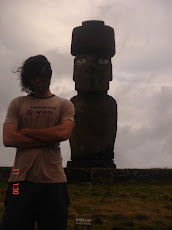From Thomas Maugh's article in the L.A. Times:
"In the largest and longest study of its kind, USC researchers have found that children living near busy highways have significant impairments in the development of their lungs that can lead to respiratory problems for the rest of their lives."Environmental injustice. Not just for poor neighborhoods anymore. Towards the end of the story, Maughs delivers the punchline:
"All the researchers conceded that there is little that can be done to mitigate the effects of the traffic pollution now."Little other than, oh I don't know, maybe drive less?
(Points to anyone who gets the reference in the title. "You like to make obscure references," while true, is not a valid answer.)







7 comments:
Wow! Very retro socialist stretching of the normal meaning of the word "injustice" there!
Even though I'm certain to be wrong, I'm gonna go ahead and guess the reference is to Mister Miyagi (his "squash like grape" line).
I know, I'm wrong.
Patrick Meighan
Los Angeles Greens
Mike, what do conservatives call it when the externalities of the free market lead to lifelong health problems for poor children?
(The title is my high school biology teacher disturbing mnemonic device for remembering Linnean classification hierarchy -- Kingdom-Phylum-Class-Order-Family-Genus-Specie).
I'm not a conservative, so I don't know what conservatives would call it. I'd call it "unfair". But I wouldn't misuse the word, "injustice", which implies that the misfortune happened to the children because someone was actively trying to hurt them.
People are generating air pollution because they're driving their cars to places they want to go. That they are harming poor children disproportionately is an unintended consequence.
I will concede, even though I don't know the precise history of the L.A. freeways, that city planners probably ran the new freeways right through the middle of the poorest neighborhoods. That's a pretty typical story in urban development. If they did, that could legitimately be called an injustice.
You need to drive around. A lot of wealthy chidren in LA live near freeways. Your quote only stated children near freeways.
Blondie,
Not your strongest effort. I'll give you the benefit of the doubt and assume that your suggestion to drive around was an attempt at irony.
Here are the most relevant numbers I could come up with in response. The study looked at 12 communities in southern L.A. County/northern Orange County. Below are the percentages of children living in poverty in each of those communities (at least the ones I could find), according to the census Web site. The asterisks mark those communities that showed the most health problems according to the Lancet study. (These are not numbers comparing the income of individuals who live near freeways with those who don't, but will have to serve as a proxy for now).
Alpine 9.6
Anaheim 19.3%
Glendora 7.1%
Lake Arrowhead,10.7%
Lake Elsinore, 20.5%
*Long beach 27.6%
*Mira Loma 18.4%
*Riverside 16.7%
San Bernardino, 36.4%
Santa Maria, 27.1%
*Upland 28.3% (huge margin of error for this one)
Notice that the relationship (between percentage of children living in poverty and likelihood of being in the top four in terms of newly discovered health effects from freeways) is not exactly linear -- plenty of other factors surely come into play. However, notice also that none of the particularly wealthy communities are on that list.
By the way, here are those same numbers for communities near here with no freeways to live near:
Beverly Hills 9.7%
West Hollywood 10.0%
Agreed. 3 points
1 Irony? You attend UCLA, there are lots of people living near freeways (405, 10, ...) in your own neighborhood. Maybe BH, but how many cities not near a freeway?
2 - Sample selection. Didnt mention North LA county , SF Valley, wealthier areas.
3 - Unit of observation. City near a freeway vs. actual children (and family income) near a freeway. The results could also support wealthy people in a low income city near a freeway. Hard to distinguish
Post a Comment